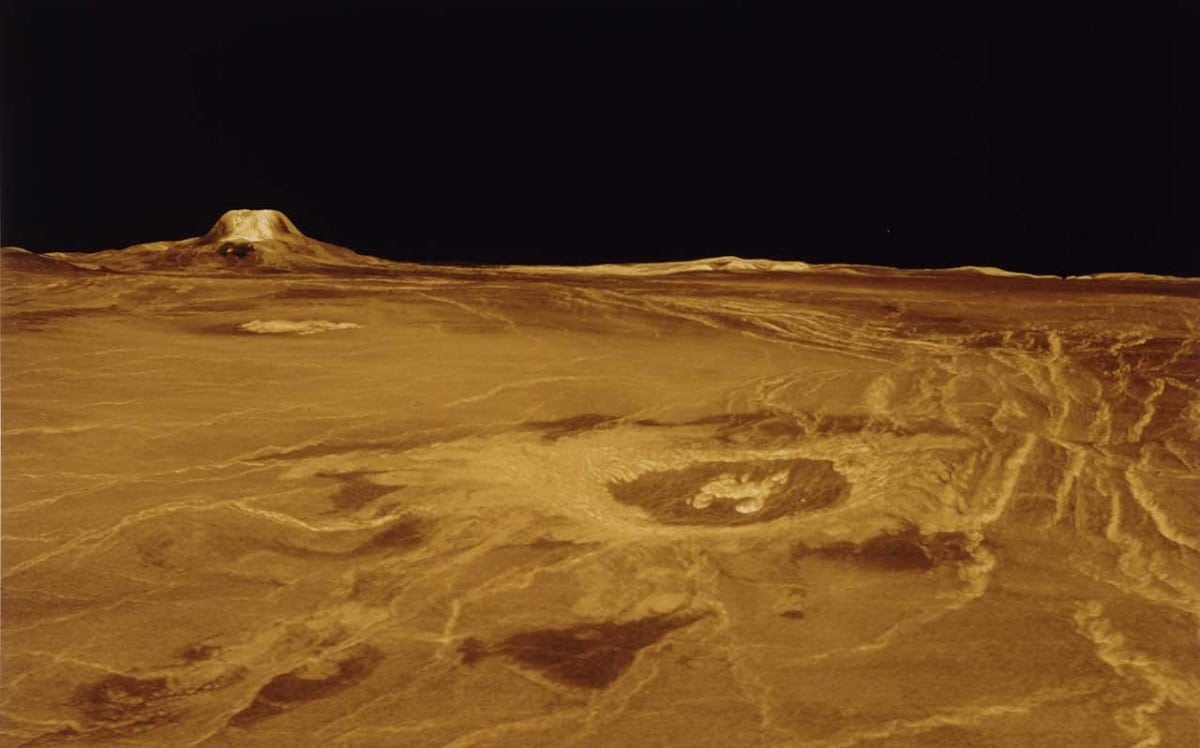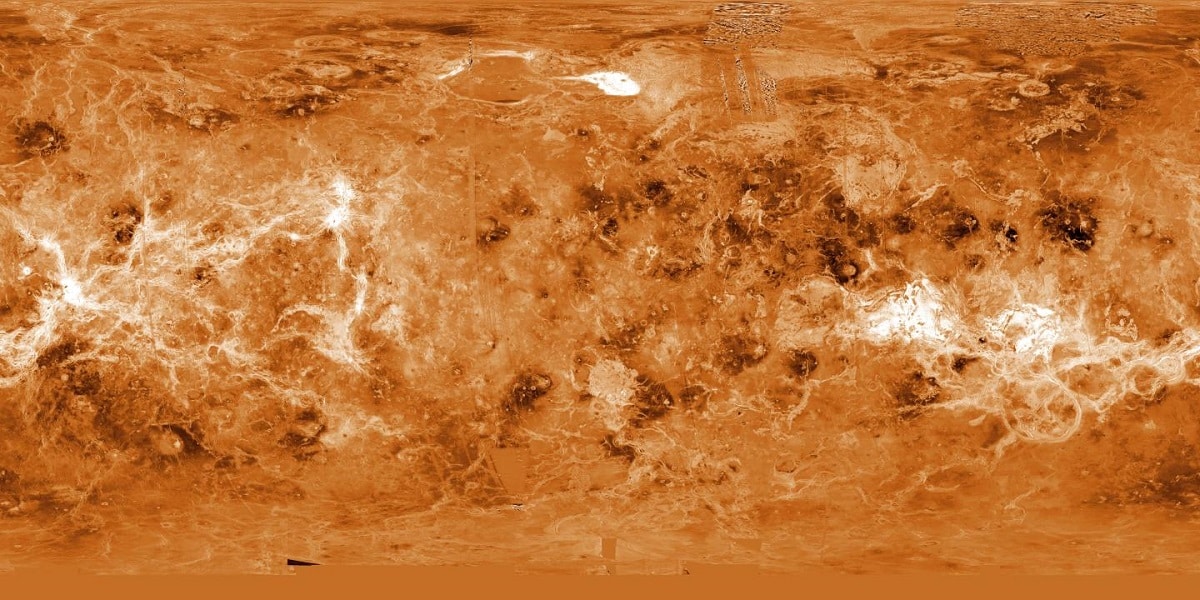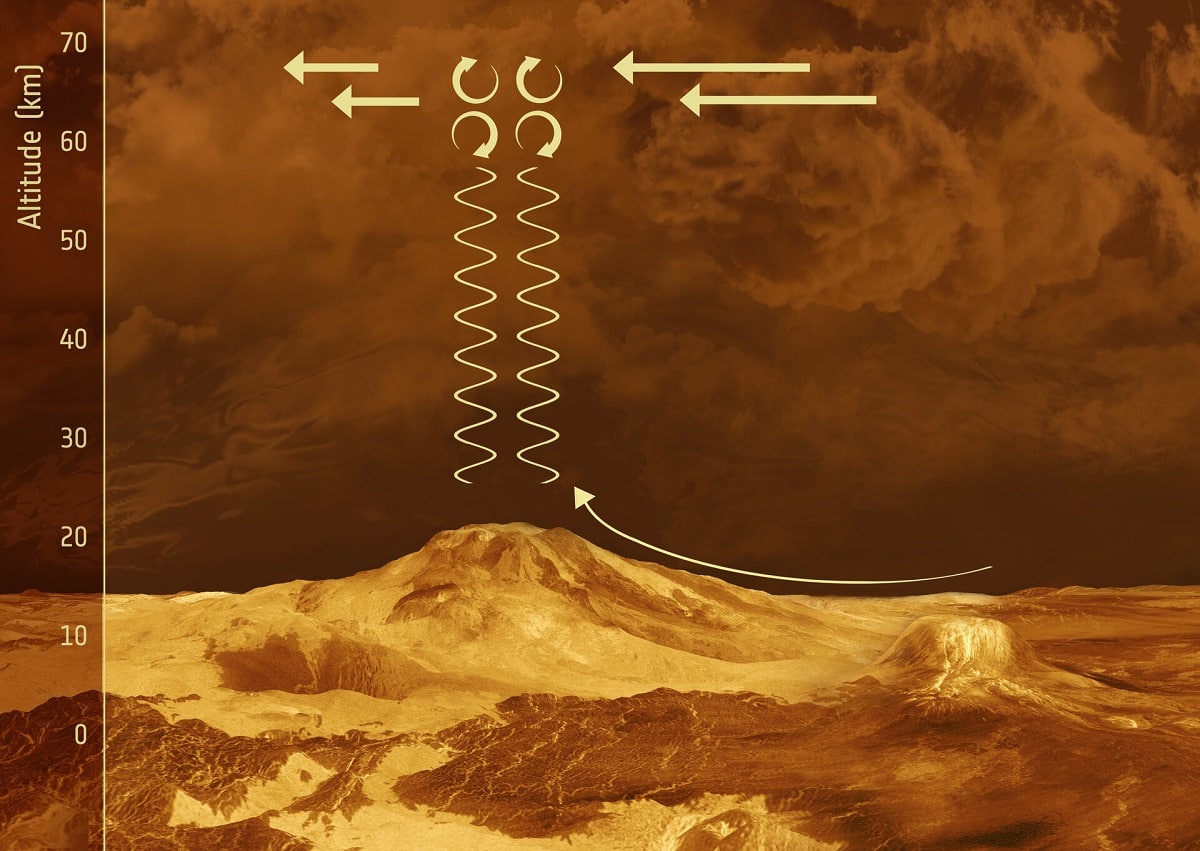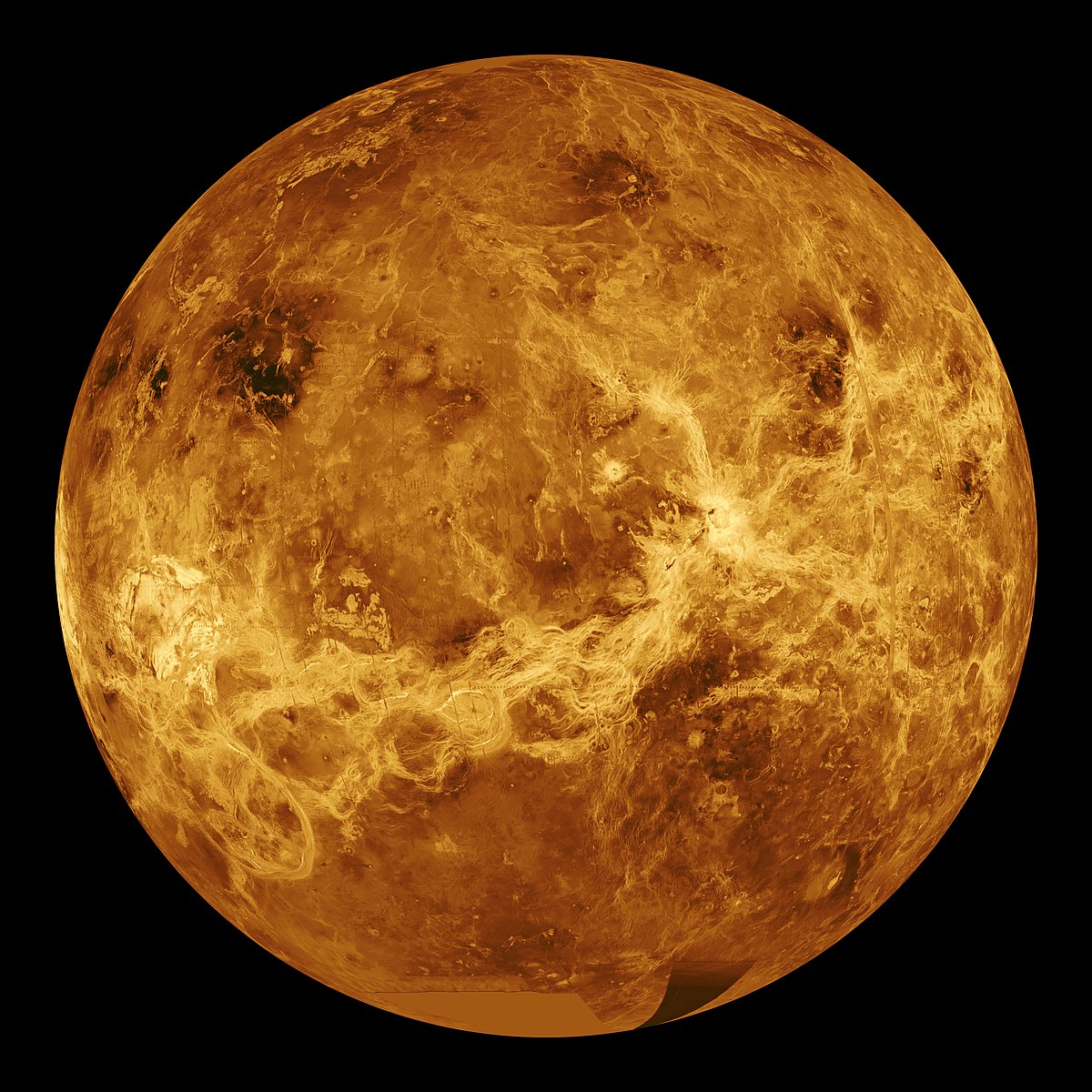
Venus is the second planet in the Solar System, and is known for its stunning beauty and its resemblance to Earth in size and composition. Despite these similarities, however, Venus has a number of unique features that make it very different from our planet. The surface of Venus has been extensively studied by scientists in order to extract as much information as possible.
In this article we are going to tell you everything you need to know about the surface of Venus, its characteristics and the discoveries that have been made.
Key features

One of the most notable features of Venus is its extremely dense and toxic atmosphere. Composed primarily of carbon dioxide, with clouds of sulfuric acid, Venus' atmosphere is capable of generating an extreme greenhouse effect, making it the hottest planet in the Solar System, with surface temperatures that can reach 460 degrees Celsius.
Another interesting feature of Venus is its retrograde rotation, which means that it rotates in the opposite direction to most of the planets in the Solar System. Furthermore, its period of rotation is longer than its period of translation around the sun, which means that a day on Venus is longer than a year on Venus.
Furthermore, Venus lacks a protective magnetosphere, which makes it vulnerable to charged particles from the solar wind. These particles interact with Venus' atmosphere, producing auroras and other interesting phenomena.
Finally, although Venus is about the same size as Earth, its surface is marked by a series of craters, mountains, and volcanic plains. However, due to the planet's dense atmosphere, it is difficult to study its surface in detail.
Venus is a fascinating planet with a number of unique and extreme features. Its dense and toxic atmosphere, its retrograde rotation, its lack of a magnetosphere, and its surface marked by craters, mountains and volcanic plains These are just some of the things that make it an interesting study object for astronomers and planetary scientists.
surface of Venus

The surface of Venus is marked by a series of craters, mountains, and volcanic plains. However, the planet's dense atmosphere makes it difficult to study the surface in detail. Most of the craters on Venus are the result of meteorite impacts. Unlike Earth, which has a constantly changing surface due to erosion and plate tectonics, the surface of Venus has remained relatively unchanged for billions of years. This means that craters on Venus may provide clues to the early history of the Solar System.
The mountains on Venus are mostly volcanic, and some of them are extremely high. The highest mountain on Venus is Mount Maxwell, which has a height of 11 kilometers. There are also a series of volcanic plains on Venus, known as "lava plains." These plains were formed through massive volcanic eruptions that covered large areas of Venus' surface with lava.
Despite the difficulty in studying the surface of Venus, scientists have managed to create detailed maps of the planet using radar images and data collected by space missions. The European Space Agency launched the Venus Express mission in 2005, which studied the planet's atmosphere and surface. NASA is also expected to launch a mission called Veritas in the 2020s, which will provide detailed images of the surface of Venus using radar and lasers.
Venus' surface is pockmarked by craters, mountains, and volcanic plains, and provides a window into the early history of the Solar System. Although it is difficult to study the surface due to the planet's dense atmosphere, space missions have managed to provide valuable information about the surface and future missions are expected to provide even more detail.
Importance of Venus in the Solar System

Although Venus is often considered Earth's "twin brother" due to its similar size and composition, this planet has a number of unique features that make it important in the Solar System.
First of all, Venus is one of the brightest planets in the night sky, which makes it easily visible from Earth. This makes it a popular astronomical observing object for amateurs and experts alike. Additionally, Venus is an important object for space exploration, with several successful missions to its name.
Second, Venus is the hottest planet in the Solar System, with an average surface temperature of 462 degrees Celsius. The extreme greenhouse effect generated by its dense carbon dioxide atmosphere provides valuable information about how changes in the atmosphere can affect a planet's temperature.
Third, the study of Venus can help us better understand the formation and evolution of the terrestrial planets in general. Exploration of its surface and atmosphere may provide clues to how other Earth-like planets formed and evolved.
Lastly, Venus is important to our understanding of planetary habitability in general.. Despite the extreme conditions on its surface, the upper atmosphere of Venus has been proposed as a possible place for extraterrestrial life. The study of Venus can provide valuable information about the conditions necessary for habitability on other planets in the Solar System and beyond.
Venus is an important planet in the Solar System due to its visibility in the night sky, its role in understanding the formation and evolution of terrestrial planets, and its potential for planetary habitability. The exploration of Venus will continue to be an active area of research and discovery for decades to come.
Discoveries on the surface of Venus
In recent years, several important discoveries have been made about Venus that have expanded our understanding of the planet. These are:
- Discovery of Phosphine: In September 2020, a team of scientists announced that they had detected phosphine in the upper atmosphere of Venus. Phosphine is a gas that on Earth is associated with microbial life, so its presence on Venus generated great expectations about the possibility of life on the planet.
- Variations in the length of the day: In 2020, scientists found that the length of the Venusian day had decreased by about 6.5 minutes over a 16-year period. This finding suggests that Venus' atmosphere is more dynamic than previously thought.
- Evidence of recent volcanic activity: In 2021, a study published in the journal Nature Geoscience suggests that there is evidence of recent volcanic activity on Venus. The scientists found a series of features on the surface that appear to have been created by volcanic eruptions in the last 2.5 million years.
- Anomalies in the density of the atmosphere: A study published in 2021 in the Journal of Geophysical Research: Planets suggests that there are anomalies in the density of Venus' atmosphere in the region known as "the phosphine window." These anomalies could be a clue to explain the presence of phosphine in Venus' atmosphere.
I hope that with this information you can learn more about the surface of Venus and its characteristics.